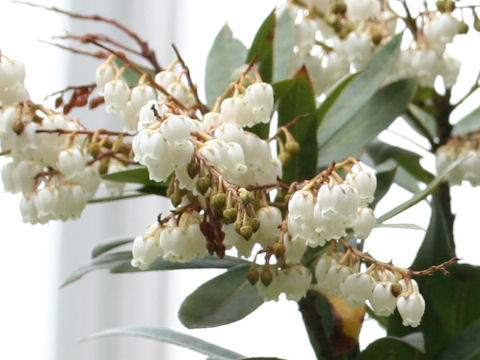
|
The Himalayan pieris (Pieris formosa) belongs to Ericaceae (the Azalea family). It is a small evergreen tree that is distributed in southeastern and southwestern China, from Zhejiang Province to Tibet Autonomous Region, as well as in Bhutan, Nepal, Burma, Taiwan, Vietnam, and northeastern India. It grows in thickets and on slopes at elevations of 900 to 2300 m and is 3 to 5 m tall. The leaves are sparsely to pseudorhizomatous and often reddish when young. The leaf blade is lanceolate to elliptic or oblong, petiolate, and serrate from base to tip. It produces panicle or raceme with small white urn-shaped flowers from May to June. In Taiwanese Chinese, it is called "台灣馬醉木" and "美麗馬醉木" (mei li ma zui mu) in Chinese.
|





